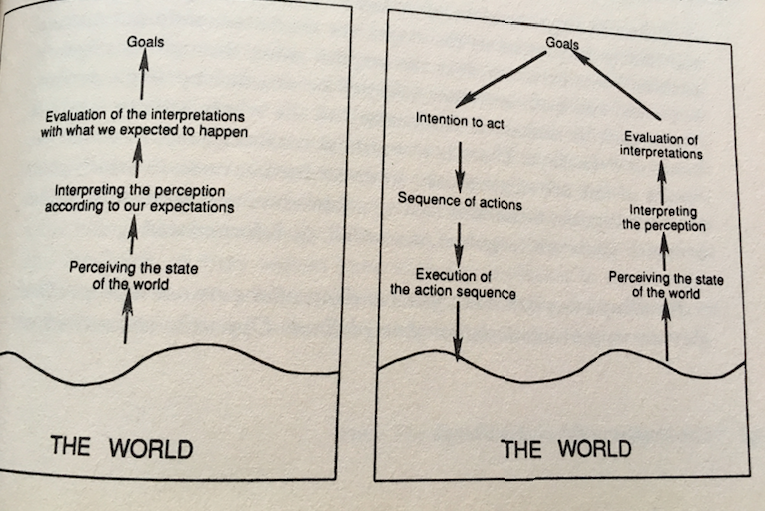
Don Norman’s famous book „The Design of Everyday Things“ which was released in 1988 has had big influence on the fields of human computer interaction and user experience design.
One of the topics he covers in his book is a model/framework of how people act when they’re interacting in the world to reach their larger goals. This model is called the seven stages of action (or Norman’s Action Cycle)
The model belongs to one of the most famous Interaction theories that have been used to model user behavior, evaluation, and to set up policies like to create user-friendly interfaces. The model can be divided into an execution phase and a phase of the evaluation.
It starts with the execution part
- Specifying/forming a goal about something that you want to accomplish (mental action)
- Forming an intention to act (mental action)
- Selecting an action or a sequence of actions that will lead you to your set goal (mental action)
- Execution of the action(s) (physical action)
After the execution part , the evaluation part begins
- Perception the state of the world/system (mental action)
- Interpretation of this perception based on your expectations (mental action)
- Evaluating the outcome: Is the evaluation successful the problem is solved , goal reached and so on (mental action)
An example:
1) My goal is going to a cafe across the street
2) I form the intention of crossing the street to reach the cafe
3) I select the action to press the button of the crosswalk signal for crossing the street
4a) I actually do press the button of the crosswalk signal (physical action)
4b) I do cross the street (physical action)
5) I perceive that I’m now across the street
6 ) I interpret this perception and..
7) …evaluate the outcome – was this action successful in moving closer to my goal? (Y/N)
This model can give us insight into ways that systems can fail or cause problems in supporting peoples larger goals and actions and it can help us to adapt the design towards users goals when designing for people – for example by making options visible (which helps with the execution part) and giving proper feedback (which will help with the evaluation part). Norman refers to problems with those parts either as „Gulf of execution“ or „gulf of evaluation“
An example of the gulf of execution
And here is a good example of the gulf of evaluation: Do „WALK“ Buttons Actually Do Anything?
Both examples could be also filed under: how to make people feeling like idiots :)
See also: Norman, Donald A. The design of everyday things (1988)